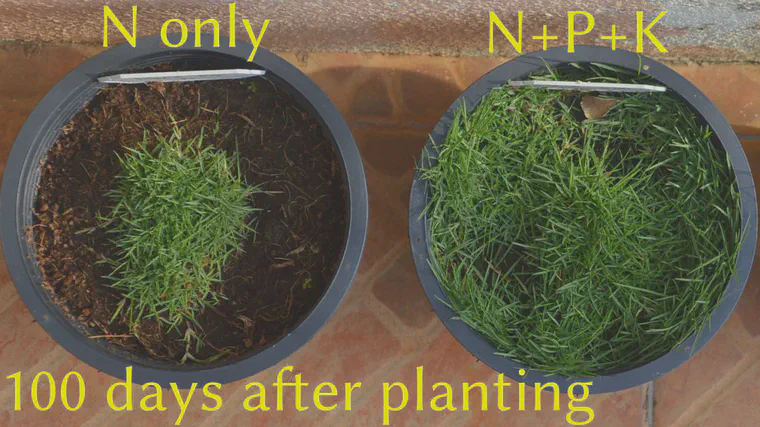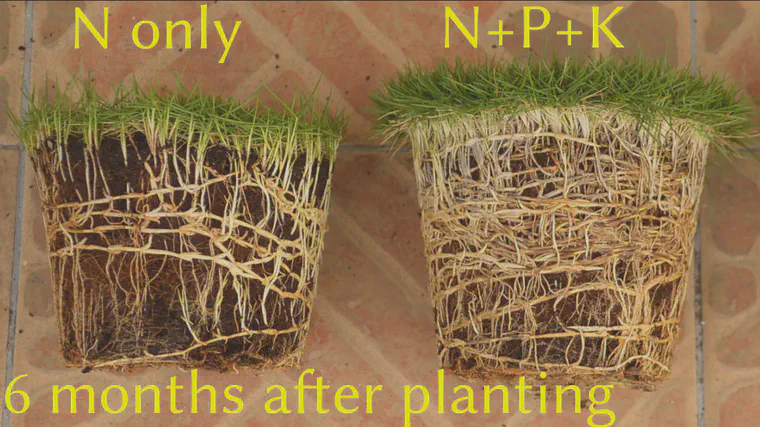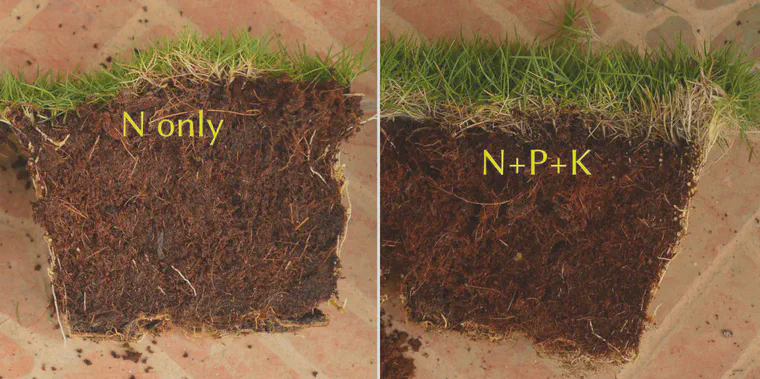When grass grows more, it makes more roots
When I saw how these grasses were growing at #ATC南店, I jotted down a couple notes for a future blog post—this one.
when grass grows more, it makes more roots
the amount of aboveground material makes more photosynthesis makes more roots
I planted grass as 3 cm diameter plugs, planted in pots filled with coconut coir on 1 October 2019, and then fertilized the pots with different materials. After 100 days, the zoysia fertilized with N and P and K had almost completely covered the pot surface area. The pot of zoysia that got only N had not.

The grass fertilized with P and K in amounts matching the plant requirements was growing more. Naturally, this grass created a larger plant—more aboveground and belowground biomass within the same size pot.

When there is more photosynthesis, one can expect the grass to create a more extensive root system.
These pots are no more. I sliced them open last week, took a couple more photos, then planted them at another location. Looking at the cross-section shows another view of how much more aboveground growth there was in the pot fertilized with enough nutrients, compared with the grass deficient in P and K.

As I pointed out in a previous post, the N-only pot is deficient in P and K. The pot fertilized with P and K in an amount proportional to grass demand grew a lot bigger, because that grass is supplied with all the P and K that the grass can use.
This illustrates how the MLSN guidelines ensure grass is supplied with enough nutrients. In this case, I didn’t know the soil nutrient levels at the time of planting. But I could assume they are negligible. In such a case, where soil nutrient levels are low, MLSN recommendations for nutrients simplify to 100% of plant use.
More about this at: